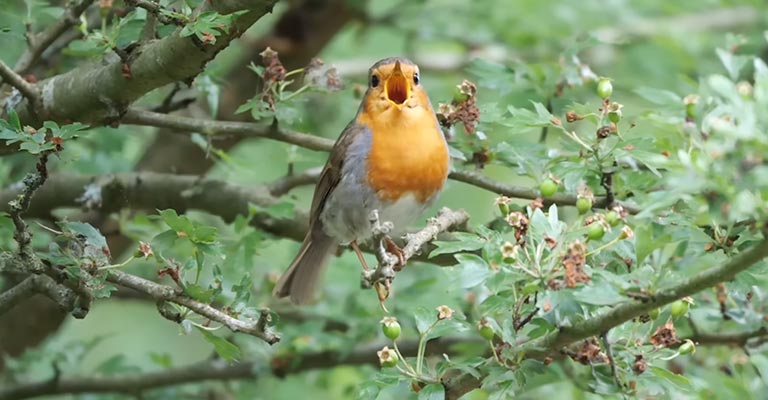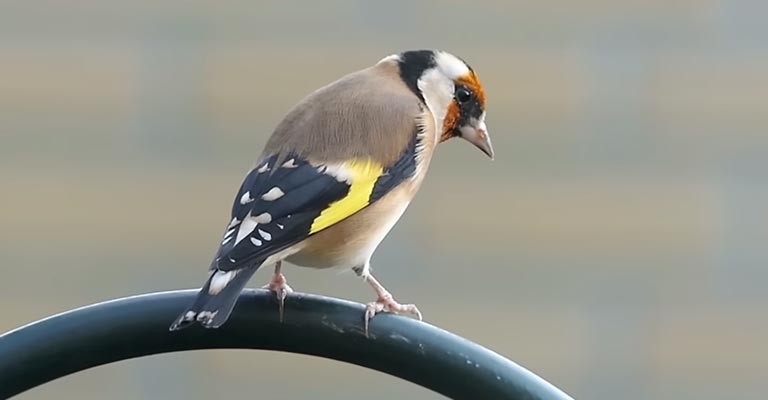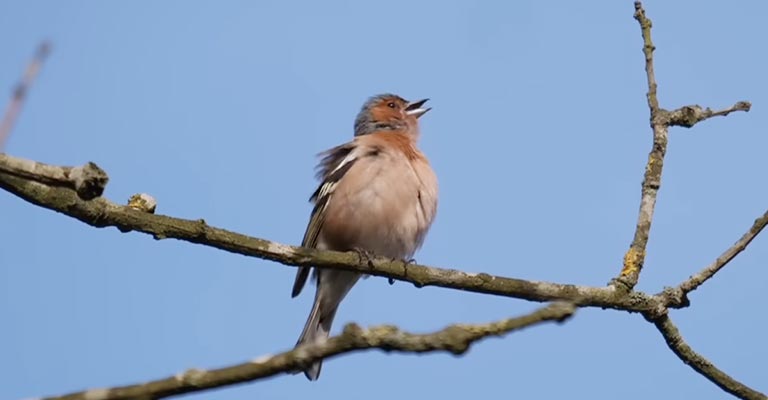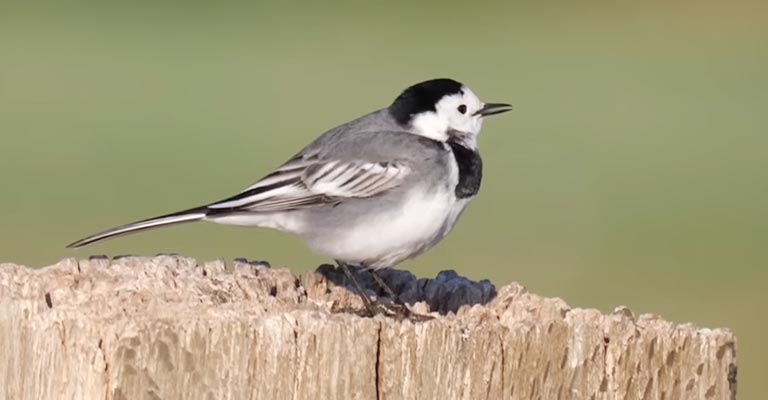The world of birds is a symphony of sounds, where each species boasts its unique, melodic masterpiece. From the vibrant dawn chorus to the tranquil serenades of twilight, the avian song has always captivated human hearts and scientific curiosity.
Birds, with their diverse vocal abilities, employ their songs for a multitude of purposes beyond mere entertainment.
These melodious notes serve as powerful tools for communication, navigation, courtship, and territorial defense, reflecting the remarkable intricacies of the natural world.
In this exploration of how birds use their songs, we dive into the fascinating realms of ornithology, where researchers unravel the secrets of these feathered maestros.
Join us on a journey through the forests, wetlands, and meadows to discover how birds, through their songs, express love, stake their claim, and chart their path through the wild. This symphony of the skies enriches our understanding of the avian world.

How Birds Use Their Songs?
Let’s dive into the diverse and fascinating ways in which birds use their songs to navigate their environments, find mates, and ensure their survival.
Communication and Language
Birdsong is the avian equivalent of language, a complex system of communication that varies greatly among species. The primary purpose of bird vocalizations is to convey information to other birds, whether they are members of the same species or different ones.
These vocalizations can communicate a wide range of messages, including warnings, greetings, and information about food sources.
Calls
Birds produce calls to convey specific messages, such as warning of danger or announcing the presence of a predator. For example, the well-known “alarm call” serves as a warning signal to alert nearby birds of potential threats.
It’s fascinating to observe how different species have developed unique calls to communicate specific dangers, such as the distinctive “chick-a-dee-dee-dee” call of chickadees to warn of predators like hawks or owls.
Songs
Birdsong, on the other hand, is often associated with courtship and mating. Male birds sing to attract females, demonstrate their health and vitality, and establish territory. Songs can also be used to deter rival males and maintain social bonds within a group.
For example, the American robin’s cheerful and melodious song serves as a courtship display. The more complex and long-lasting a song, the more attractive it is to potential mates.
In contrast, the northern mockingbird is renowned for its extraordinary ability to mimic the songs of other birds, demonstrating its vocal prowess as a means of attracting a mate.
Courtship and Mating
One of the most well-known uses of birdsong is in the context of courtship and mating. Male birds are the primary singers and their songs often play a pivotal role in attracting potential mates.
These songs can serve as both advertisements of their quality and a demonstration of their fitness for reproduction.
Song Repertoire
Many bird species have complex song repertoires, showcasing a variety of melodies and calls. The diversity in their songs can be an indicator of their genetic fitness, as it requires physical stamina and cognitive abilities to produce and remember intricate melodies.
Female birds often prefer males with larger and more varied repertoires, as this suggests greater genetic diversity and adaptability in their offspring.
Duetting
In some bird species, duets are a form of courtship behavior where both males and females contribute to the singing. This synchronized vocalization can establish and strengthen the pair bond, as well as defend the territory.
The plain-tailed wren, a Central American bird, is known for its intricate duets. The female initiates the duet, and both birds participate, creating a harmonious and complex vocal performance that can last for several minutes.
These duets help strengthen the pair’s bond and communicate their unity to potential competitors.
Territory and Defense

Establishing and defending territory is a crucial aspect of bird behavior, and songs play a significant role in this process. Birds are territorial creatures, and they use their songs to communicate the boundaries of their domain and ward off intruders.
The Dawn Chorus
At dawn, many bird species participate in a phenomenon known as the “dawn chorus.” This is a collective singing effort involving multiple birds in the same area, and it serves several purposes.
One of these is to proclaim and defend territory by broadcasting their presence and deterring potential intruders.
Song Contests
In cases where rival males have overlapping territories, they engage in song contests, which involve taking turns singing songs in a vocal showdown.
The bird that produces the most elaborate and powerful song is often deemed the winner and retains the territory.
One example of a bird known for its territorial song contests is the European skylark. Males engage in intense aerial displays and song contests to secure their territories, making this a visually and acoustically impressive spectacle.
Navigation
Birds use their songs not only for communication but also for navigation. They can perceive changes in the pitch and intensity of sounds, helping them determine the direction and distance of specific landmarks.
Echo Location
Some birds, such as the oilbird of South America, use echolocation, a form of navigation where they emit sounds and interpret the echoes that bounce back. This unique adaptation allows them to navigate through pitch-dark caves in search of food.
Homing Calls
During migration, birds produce specific calls to help coordinate their flock’s movements. These calls can serve as cues to maintain the flock’s cohesion during long journeys.
Learning and Cultural Transmission

Birds are not born with their songs; they learn them through a process known as vocal learning. This capacity to learn songs is a fascinating aspect of avian behavior.
Innate vs. Learned Songs
Some birds, like canaries, have an innate song template. They sing specific songs characteristic of their species from an early age. Others, such as the song sparrows, learn their songs by listening to and imitating the songs of adults during their early development.
Cultural Transmission
In some species, song patterns are culturally transmitted, and the songs of one generation are influenced by those of the previous generation. This cultural evolution in bird songs has been observed in populations of great tits and white-crowned sparrows.
Preservation and Conservation
The songs of birds are not only beautiful and intriguing but also a vital part of the ecosystems in which they live. Many bird species are in decline due to habitat loss, pollution, and climate change.
The loss of these species and their songs would not only be an aesthetic tragedy but also disrupt ecological balance.
Conservation efforts are crucial to protect the avian voices that grace our skies. Preserving their habitats, mitigating climate change, and implementing sound policies are essential steps in safeguarding these remarkable creatures and the rich symphony they provide.
What Is the Function of Birdsong?

Birdsong serves a multitude of functions in the avian world. While it can certainly bring aesthetic pleasure to human listeners, its primary purpose for birds is often more practical.
Understanding these various functions can shed light on the emotional underpinnings of avian song.
Communication
One of the central roles of birdsong is communication. Birds use their songs to convey important messages to other birds. These messages can include warnings of danger, establishment of territory, and invitations for courtship.
Singing allows birds to coordinate their behaviors, find mates, and maintain social bonds within their species.
Courtship and Mating
During the breeding season, male birds often sing to attract females. Their songs are like musical advertisements, showcasing their health, vitality, and genetic fitness. The more melodious and complex the song, the more attractive it is to potential mates.
However, while the act of singing may lead to successful courtship, it doesn’t necessarily reflect the bird’s emotional state in the way human emotions are understood.
Territorial Defense
Birds use their songs to establish and defend their territories. Singing can deter rival males and broadcast the presence of the singer to potential competitors.
While the act of singing may convey a sense of ownership and dominance, it doesn’t necessarily equate to happiness as humans experience it.
Joy in Song
It’s possible that some birds may experience a form of contentment or satisfaction while singing, particularly during courtship rituals. Singing could be associated with feelings of well-being when it leads to successful courtship or when a bird successfully defends its territory.
However, it’s important to remember that these feelings, if they exist, are likely more primitive and instinctual than the complex emotions experienced by humans.
FAQs
Do all birds sing, or is it a behavior specific to certain species?
Not all birds sing, and the ability to sing varies among species. Songbirds, also known as oscine birds, are the most notable singers. They possess specialized vocal structures and complex songs.
Can birds’ songs change over time or adapt to their environment?
Yes, birds’ songs can change and adapt over time. This phenomenon is most commonly observed in species with cultural transmission of songs. In such cases, young birds learn the songs of the local population and contribute to the evolution of song dialects.
Do female birds sing, or is singing predominantly a male behavior?
In many bird species, singing is predominantly a male behavior, especially during the breeding season. Male birds often use their songs to attract females. However, there are exceptions, and some female birds do sing.
Do birds sing when they are alone, or is it primarily a social behavior?
Birds can sing both when they are alone and in the presence of other birds. While singing often serves social functions like courtship and territory defense, birds may also sing when they are solitary.
Are there specific bird species that are known for their exceptionally complex songs?
Yes, several bird species are renowned for their exceptionally complex and melodious songs. Some examples include the nightingale, the mockingbird, the song sparrow, and the canary.
Conclusion
In the grand tapestry of the natural world, avian songbirds stand as virtuoso performers, casting their melodious spells upon all who care to listen. Songs are the ways of communicating and mating among birds.
From the simple warble of a sparrow to the intricate melodies of a nightingale, their songs hold the keys to survival, social dynamics, and the preservation of their species.
By exploring the multifaceted roles of avian songs, we gain a profound appreciation for the complexity of nature and the importance of conservation. These songs, so much more than pleasant sounds, are integral to the life of birds.
They serve as beacons guiding them through unfamiliar landscapes, as invitations to courtship dances, and as declarations of territorial sovereignty.
As we immerse ourselves in the enchanting world of avian songs, we become not just observers but participants in an intricate ecological symphony.